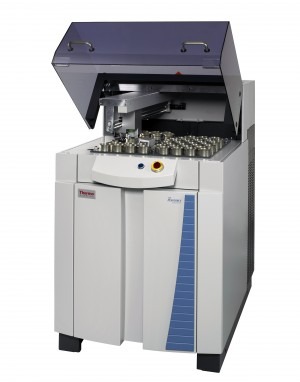
Thermo Fisher Scientific claims to have developed a precise and reliable method for elemental analysis of oil samples in the petrochemical industry.
The method uses the Thermo Scientific ARL Perform'x X-ray fluorescence (XRF) spectrometer to reach detection limits of below 0.5 parts per million (ppm).
Covering a wide range of applications, including the analysis of sulphur in oil and lead in gasoline, the method is detailed in an application note entitled 'Analysis of Oils', available to download free-of-charge from the company's website.
According to Thermo Fisher, petrochemical regulations are becoming increasingly strict and demanding lower levels of quantification for key elements such as sulphur, nickel, vanadium and lead in products.
Compliance with various norms, including ASTM D2622, ASTM D4927 and ISO 20884, requires a method that can offer high sensitivity and stability to ensure content conforms to regulatory limits.
The Thermo Fisher method uses wavelength dispersive XRF (WDXRF), which is claimed to have many advantages over traditional methods.
This technique is claimed to offer excellent repeatability and resolution, particularly for light elements such as sodium and calcium.
In addition, it allows oils to be measured directly without dilution, thus reducing sample preparation time and increasing speed and throughput of analyses.
Designed for demanding laboratories, the ARL Perform'x system offers dual-sample loading and is able to process more than 60 samples per hour, offering rapid analysis of up to 84 elements.
The instrument provides sample recognition capability that ensures safe and straightforward loading of liquids.
With its helium shutter, the ARL Perform'x completely protects the goniometer from chemical attacks and thermo instability by separating the primary chamber from the spectral chamber.
The system also offers unmatched stability and repeatability of results, making it suitable for solving complex composition problems in demanding industrial applications.
The ARL Perform'x instrument features the latest version of the Thermo Scientific OXSAS software, which supports Microsoft Windows 7.
A synoptic panel mimics real-time operation and internal functioning of the instrument on a separate display screen, enabling users to monitor the status of their analyses and improve productivity.




